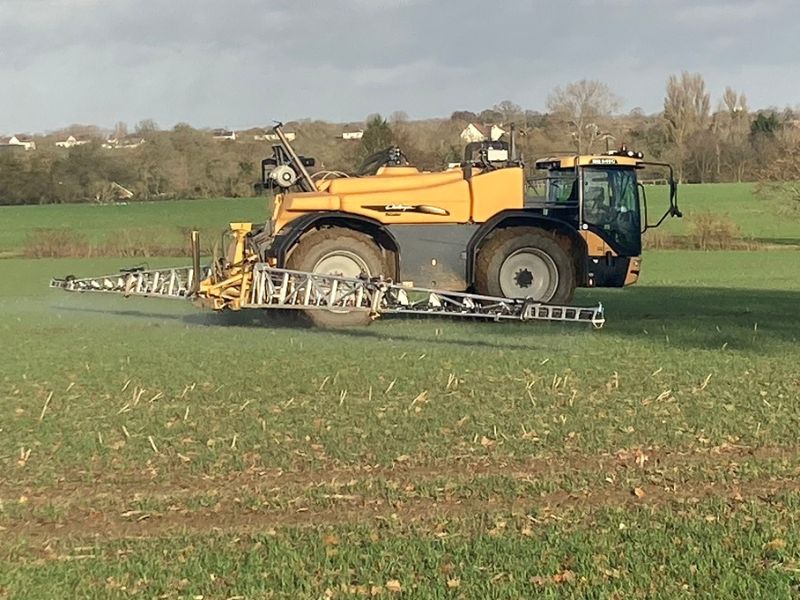Keen to stay ahead on yield, Jeff Claydon, farmer and CEO at Claydon Drills, is hosting trials on two Olmix biostimulant programmes this season. He believes they will be well-suited to his Claydon Opti-Till direct strip seeding technology.
The Claydon family have farmed the heavy grade 2 hanslope clay land of Suffolk since the early 1900s. Brothers Jeff and Frank started out in 1970 and still farm 340ha of arable land at Wickhambrook, near Newmarket.
“The manufacturing side of the business began in 1981, when Claydon Yield-o-Meter was established to sell its yield monitoring system for combines,” says Jeff. “We have always looked at innovations that can increase yield. Olmix has encouraged me to host this biostimulant trial to see if they can bring more yield to the party.”
The plots are a tramline width (36m) and run the field length – 360m. A commercial combine will be used to harvest them.
Two products used in the programmes are Neosol, a soil microbial biomass activator, and Primeo S12, a soil nutrition stimulator, both of which are applied at drilling. As well as yield, the team will measure crop development, plant health and quality parameters (including grain protein), says agronomist Guy Gibson at Advanced Efficacy, who is running the trial.
The trials will be run as two programmes over a five-year period. One will include Neosol (150kg/ha) plus four foliar applications based on Olmix active biostimulant, Elevate. The other will have Primeo S12 (150kg/ha) plus four foliar applications based on Olmix active biostimulant, Bioman. The final plot will be the farmer’s programme, used as the control.
“The farm’s soil is very healthy, so if we are going to see any effect of Neosol and Primeo S12 we will see it before the third application of foliar biostimulant around mid-April,” says Mr Gibson.
The farm’s rotation is two wheats followed by an oilseed rape or winter oat break crop.
“We spray fields off before drilling and everything is direct seeded using a Claydon Opti-Till drill,” says Jeff. “The drill’s leading tine technology loosens soil where necessary – in the rooting and seeding zone. The bands in between the seeded rows are left undisturbed.”
The winter wheat in the trial field was drilled in mid-October. Fertiliser is broadcast into the 10cm band where it is strip-tilled alongside the seeds – this means they are both in the same growing zone.
Recently, growth in the trial plots has been checked because of cold temperatures and snow cover but all plots looked well in November, says Mr Gibson. “I am hoping to see differences between the trials in tiller count in March and April, compared with the farm’s standard programme.”
Repeating the trials over a five-year period is important to give a consistent return on investment, says Grant James, Olmix manager, UK and Ireland. “Biostimulants perform best in adverse conditions, so if you have a year where conditions are good, you may not see them performing at their maximum potential. Trialling over five years, you are less likely to have perfect conditions every year, and more likely to see their positive benefits.”
In a recent five-year trial in the Czech Republic, Neosol led to better soil structure and higher yields, allowing crops to meet their genetic potential, says Olmix international soil expert, Benoit Le Rumeur. “These soil structural improvements provide better conditions for plant growth, allowing improved rooting and nutrient take up, as well as water availability.”
Olmix UK will be available at the Cereals Event, Perlethorpe, Nottinghamshire from 13-14 June 2023 to talk about the products being trialled.
Editor’s notes
Olmix Micromix, based in Brittany, France and the UK, specialises in marine biotechnology and green chemistry, using algae to improve plant, animal and human health. It has offices in 27 locations worldwide. www.olmix.com
We are happy to help with enquiries from the media – please contact Marianne Curtis at [email protected] for further details. Tel: 07443 747808.





